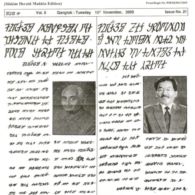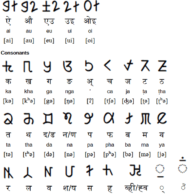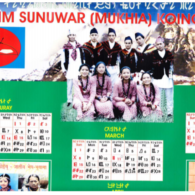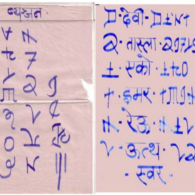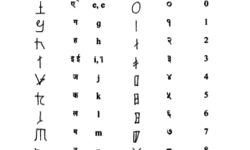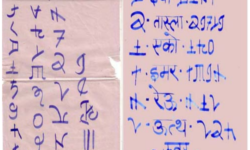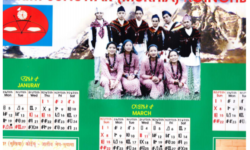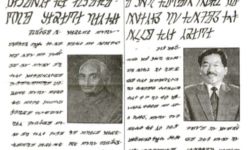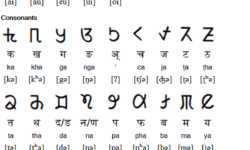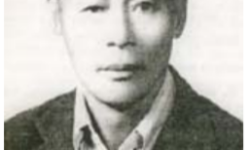Profile
The Himalayan region is the most volatile and complex endangered-alphabet area in the world.Currents and counter-currents of human movement, stirred up in particular in the 1950s after the Chinese occupation of Tibet and in the 1990s when Bhutan expelled more than 100,000 Nepali-speaking ethnic groups including the Kirat, Tamang, Magar, Brahman, Chhetri and Gurung peoples, have led to a fascinating and challenging situation.
Thanks to a rare policy of inclusivity, the neighboring Indian state of Sikkim recognizes 11 official languages and scripts, while in Nepal no fewer than 14 scripts are used.
Some are traditional scripts, centuries old; some are refugee scripts used by people who have been exiled from their homelands, and some are emerging scripts that have been created recently for languages that do not have their own specific writing system.
The last category is especially important as displaced ethnic groups struggle to find ways to survive. To maintain one’s dignity, integrity and identity in a foreign country is never easy, and all over the world, language — both spoken and written — is a vital factor in the face of feeling marginalized and despised.
One specific survival tactic, used by minority groups not only here but elsewhere in India, is to demonstrate they represent a disadvantaged and identifiable culture. (The terms used in Indian official circles are Scheduled Tribe, Other Backward Communities, or Most Backward Communities.) Such a classification, if achieved, grants somewhat easier access to seats in the local political bodies, to places in universities, to certain jobs, and in some instances financial loans. Needless to say, this leads to a politically charged and often acrimonious situation.
To receive that classification, emigré and refugee groups have had to prove that they have a distinct culture and a language different from others, and one indication of such distinctness is to have their own script. Hence the particular importance of minority alphabets to the region.
Jenticha is one script that has had to go through this process of recognition.
The script was developed by Krishna Bahadur Jentich (1926–1991) in 1942 to write the Sunwar or Sunuwar language, which is spoken in Sikkim, India and eastern Nepal.
Like most newly-created scripts, Jenticha struggled for adoption, and Jentich died — but in a sense the very fact that the script had existed made it too important to be allowed to disappear.
Lal-Shyãkarelu Rāpacā takes up the story:
“When I started my PhD course at Jawaharlal Nehru University, New Delhi in 2001, I opened up [the Jenticha] chapter again and I started writing research papers, alphabet books, primer books, and elementary grammar for children during my field work days. As a result, we Kiranti-Kõits people were successful in reviving the script and language in Sikkim. After my PhD, I went back to Nepal and tried to do the same thing in my home country too… using the same script in Nepal also as it is used in Sikkim because I was able to revive it with my hard work there.”
According to the proposal to include Jenticha in Unicode, “Primary educational materials for teaching Sunuwar and Jenticha are published by Kõic Bu in Sikkim. A Sunuwar edition of the Sikkim Herald is produced in Jenticha. The first edition in 2002 was hand-written by Lāl-Śhyākārelu Rāpacā, though now the paper is printed in digitized type. The script is used in grammars of Sunuwar, proceedings of the Sikkim legislative assembly are translated into Sunuwar using the script, anthologies of Sunuwar poetry are printed in the script, and the Sikkim Sunuwar Mukhia Kõichbu prints calendars in Jenticha.”
The script continues to grow and be adapted to the needs of the language. In his revised Unicode proposal, Anshuman Pandey writes: “More recently, in order to fully express the Sunuwar language, the script committee of the Sunuwar Welfare Society recently recommended a new sign for nasalization and the usage of three signs for indicating tone…. These signs are influenced by diacritics used in the Latin script. The script committee believes that using well-understood signs for nasalization and tones would faciliate learning and retention of the script better than the invention of new signs specific to the script. The expanded repertoire shows both stability and innovation. It is stable in that the repertoire as created by Jentich forms the core of the alphabet and the letters added by Rapacha and others twenty years ago have become naturalized as part of the script. It is innovative in that users continue to enhance the script as needed for representing the Sunuwar language while adhering to the basic principles of Jentich’s script.”
You can help support our research, education and advocacy work. Please consider making a donation today.
